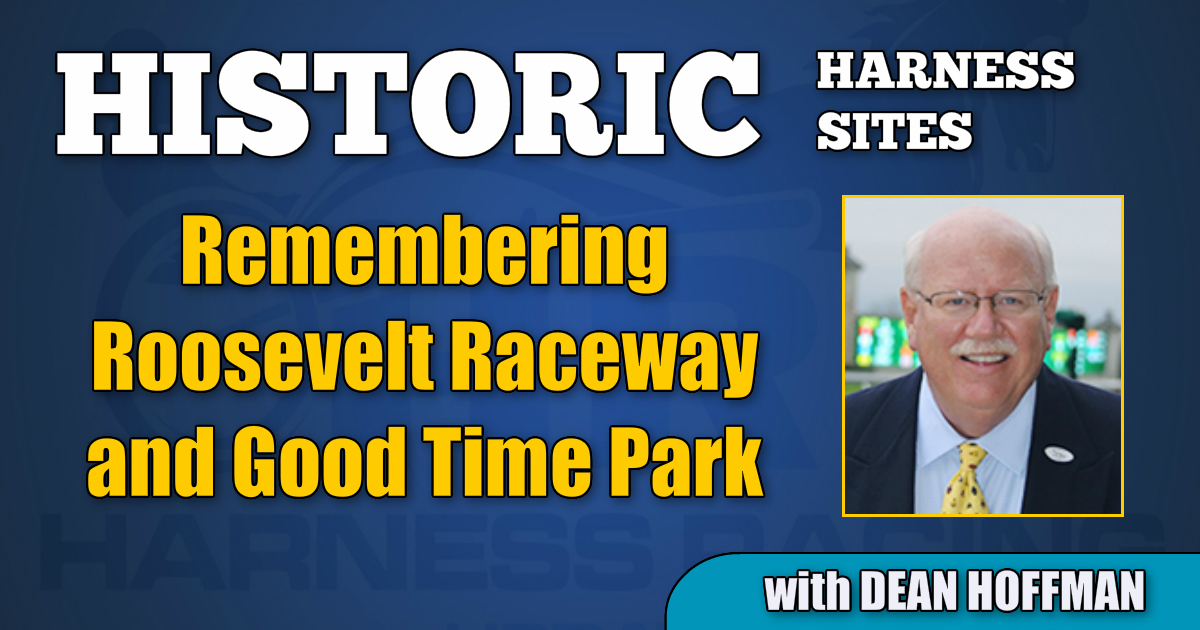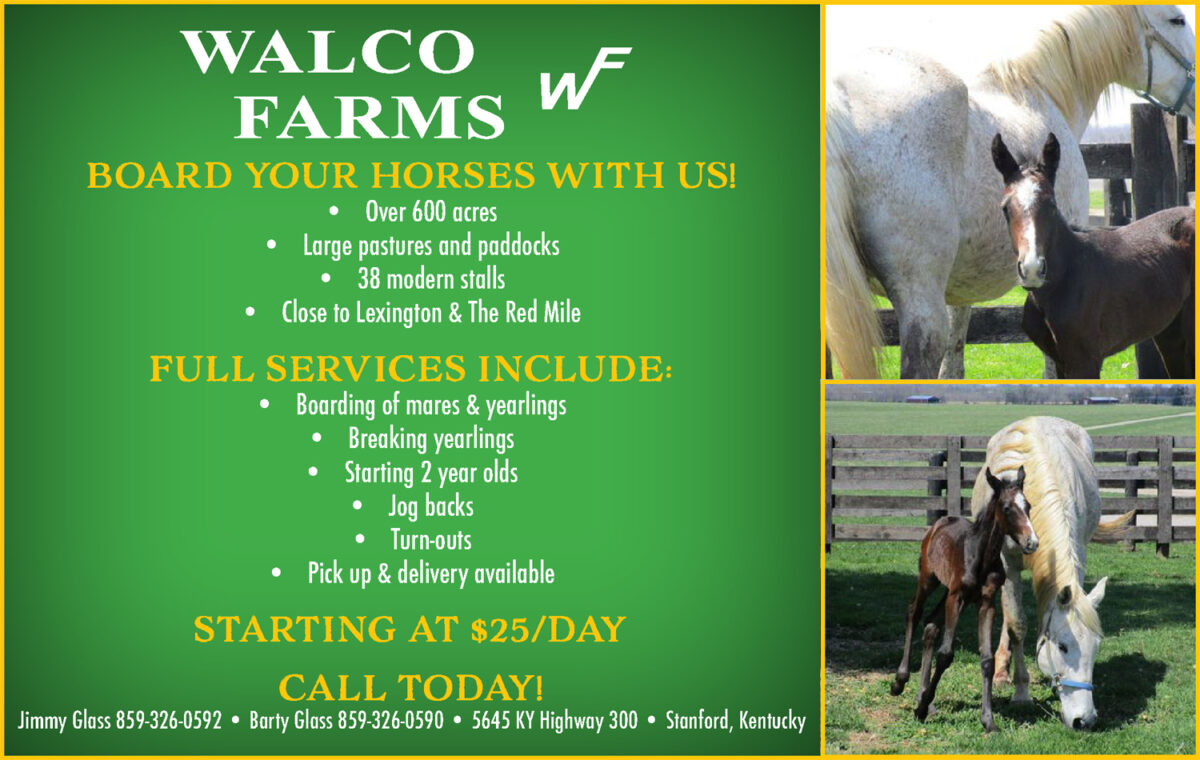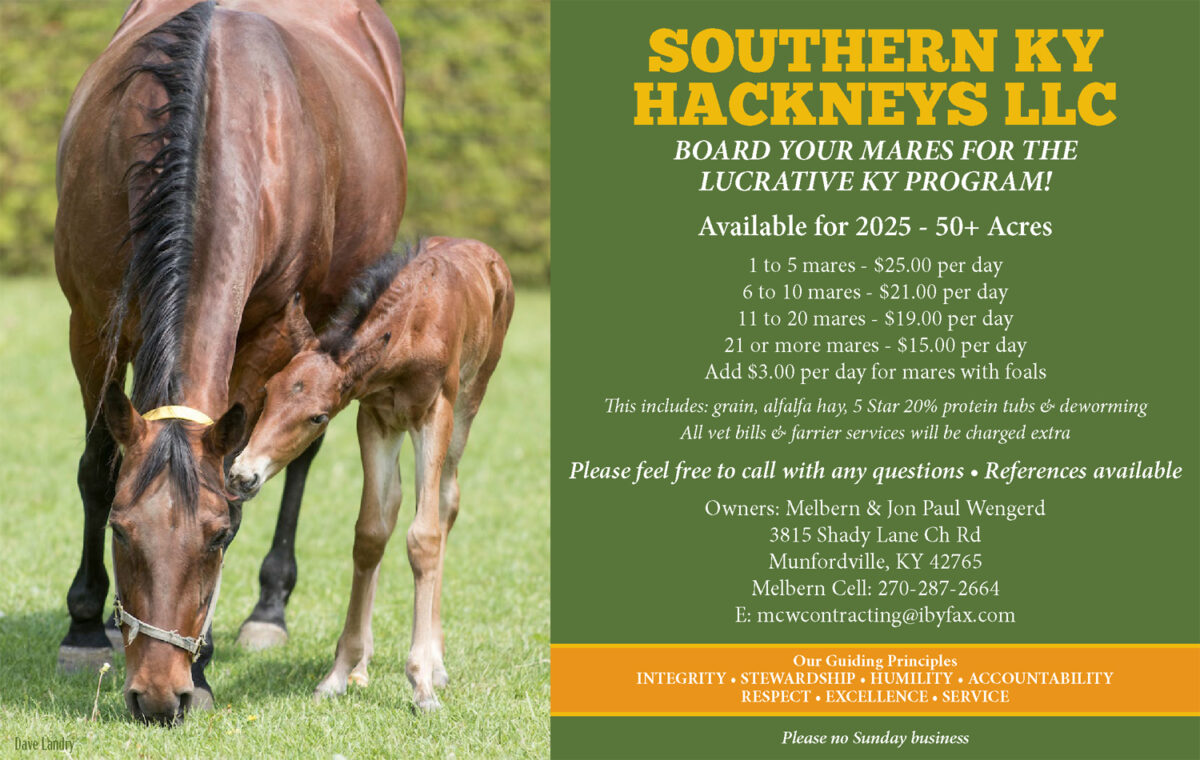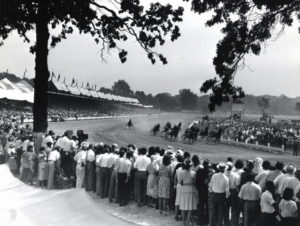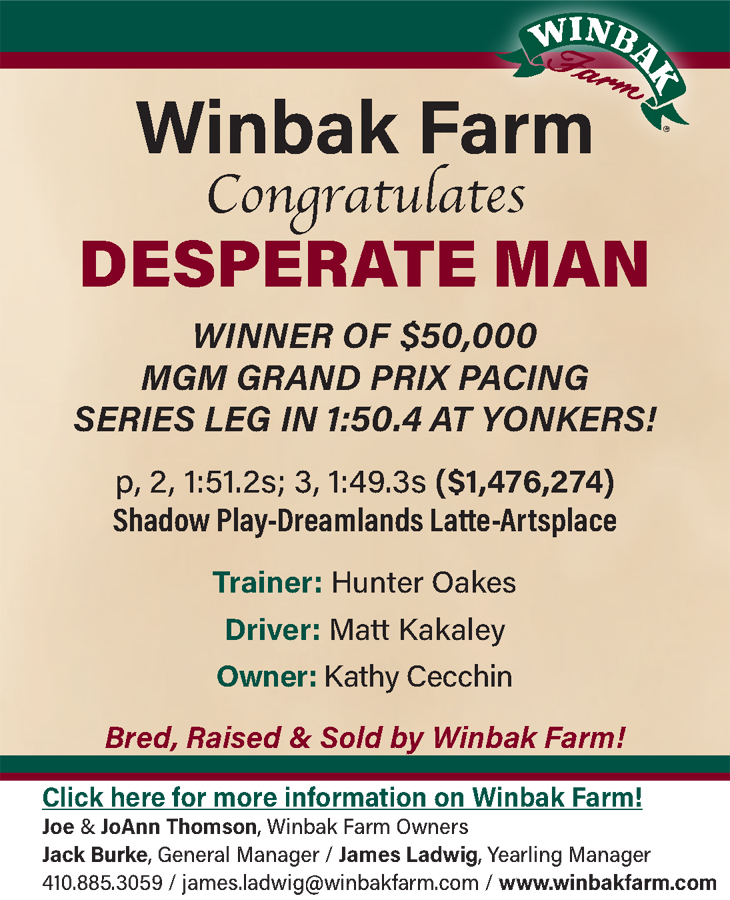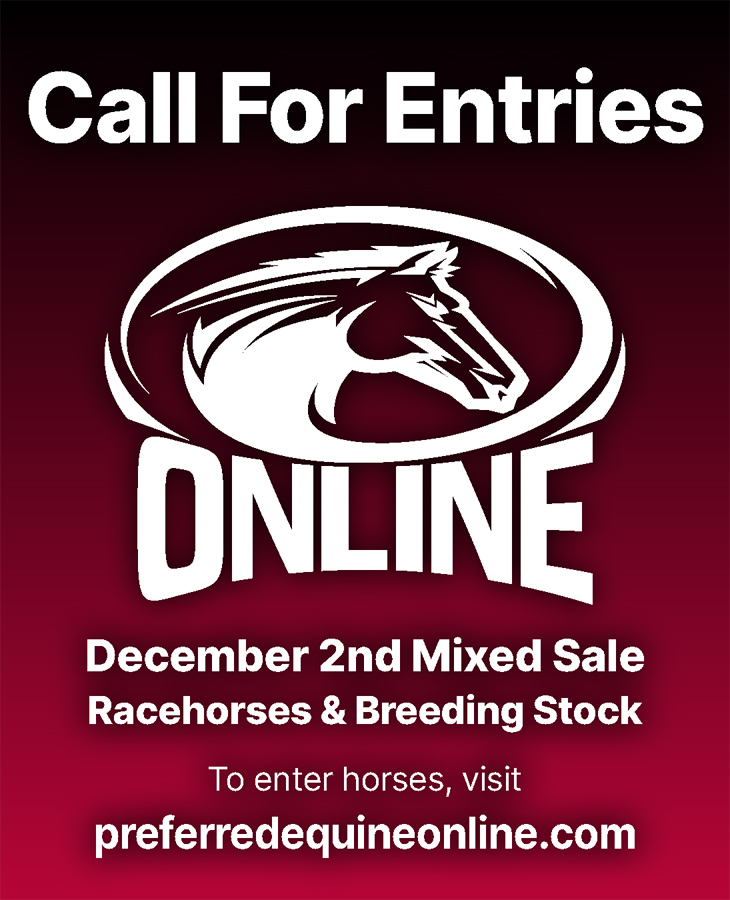Remembering Roosevelt Raceway and Good Time Park
by Dean A. Hoffman
Great horses and great people that played an important role in harness racing are not forgotten once they pass from the scene. They enjoy immortality through their accomplishments both on and off the track.
So it is also with many historic sites in the sport, the places that hold special significance in the harness racing for varying reasons. Some of these historic harness sites are long gone (and often forgotten) while others remain in varying form.
Just as we recognize and honor the most significant horses and people in standardbred history, so should we remember the sites where so much harness racing history was made, even if that site now happens to be a shopping center or subdivision.
This begins a series of five brief articles on sites that deserve recognition for their significance in the sport. While some may be gone physically, they should never be forgotten.
Roosevelt Raceway – Westbury, NY
It was the dream track, a palatial racing emporium far ahead of its time and it made its debut when harness racing was enjoying an unrelenting wave of post-World War II success.
Actually, the original Roosevelt Raceway first played host to harness contests in 1940. It was an inauspicious opening as bad weather and a shortage of entries threatened to doom the entire endeavor.
A year after Roosevelt’s opening, the war in Europe blossomed into World War II with the bombing of Pearl Harbor. This was certainly not time to be operating a racetrack for horses that pulled sulkies.
Roosevelt Raceway’s founding father George Morton Levy, a New York attorney, wasn’t getting rich by owning a racetrack, but he persevered and held on during the lean years during World War II.
With the end of the war came not only the post-war baby boom, but also a period of extraordinary economic prosperity for America. Europe was in ruins; it was the same story in Japan. America’s massive industrial resources were intact and the boys coming back from military service were ready to go to work during the day — and to play the ponies at night.
That led to such extraordinary success for Roosevelt Raceway that it outgrew its original plant by the mid-1950s. It was time for George Morton Levy to build his dream track.
And he did just that with marvelous amenities that racing fans had never seen at a harness tracks. Fans liked what that saw at Roosevelt and they flocked there in droves.
The “new” Roosevelt that opened in 1957 was unquestionably the most palatial harness track in North America. In today’s dollars, the construction cost was about $175 million.
USTA president Lawrence Sheppard (also master of Hanover Shoe Farms), said, “The world of racing has never seen anything that can remotely compare with it.”
It was a split-level construction consisting of five separate levels and towering over the splendor was the Cloud Casino, affording racing fans splendor that they’d never experienced.
Naturally, Roosevelt attracted the best horses to new events such as the Messenger Stakes for sophomore pacers, which had started in 1956.
But Levy wasn’t content to showcase merely the best standardbreds in North America; he wanted the world to come to Roosevelt.
And come they did with the creation of the International Trot in 1959. It pitted the best of North America against the best of Europe.
Roosevelt publicist Nick Grande seized the artichoke-eating habits of the French star Jamin and turned the trotter’s peculiar taste in snacks into reams of publicity. And Jamin did the rest by winning the first Roosevelt International over Tornese of Italy.
The following year, Hairos of Holland, lugging a 300-pound driver, triumphed in front of 54,861 fans, the largest crowd ever at a pari-mutuel harness track.
When the new track opened in 1957, Roosevelt became the first raceway to offer a $100,000 purse when the Messenger Stake was won by Meadow Lands, driven by Delvin Miller.
Just a few years later in 1962, the Messenger Stake was contested for a purse of $169,430 and the winner Thor Hanover paid $144 for a $2 win ticket.
By 1970, Roosevelt was averaging $2 million in handle. That’s about $13 million in today’s currency. Keep in mind that the track usually carded nine events per program and all betting was done on track. Yes, a $13 million average nightly handle.
Crowds averaged about 20,000 fans per night.
Things began to change in the early 1970s when Off-Track Betting came to fruition in New York City and racing fans realized that they no longer had to trudge to the track to play the ponies. There were betting shops in business districts and many neighborhoods.
The convenience of Off-Track Betting and the growing competition from state lotteries affected Roosevelt in the 1970s. But then in America’s Bicentennial year of 1976, Roosevelt confronted a gleaming new rival called the Meadowlands in what had been swampy New Jersey soil.
The Meadowlands was a mile track and could accommodate larger fields, and that led to increased pari-mutuel handle and soaring popularity among NYC-area bettors.
The Meadowlands campaigned hard to bring the Hambletonian to the Big Apple and staged its first Hambletonian on rainy summer day in early August, 1981.
By then the handwriting was on the wall. Roosevelt Raceway was no longer the dream track in the eyes of the harness world. It had lost that title to the Meadowlands and business declined at Roosevelt.
Still, it was a shock to many when it was announced that Roosevelt Raceway would host its final race in 1988 and close forever. The property is now occupied by offices, shops, and housing.
Good Time Park — Goshen, NY
If you exit from Rte. 17, you will see a large, flat field, but if you close your eyes and use your imagination, you can almost hear the hoof beats of the champion horses that gained fame at Good Time Park in Goshen.
For decades, the best trotters in America came to Goshen in quest of the Hambletonian, the biggest prize in harness racing.
Good Time Park, a three-cornered track owned by William H. Cane, played host to the Hambletonian from 1930 through 1956 (with the exception of 1943 when it was held on the site of Yonkers because of wartime restrictions). When Cane died, so did the racing at Good Time Park and the Hambletonian moved about a thousand miles west to Du Quoin, IL.
But during its prime, Good Time Park played host to the best of the breed, including Hambletonian winners such asGreyhound, Rosalind, Spencer Scott, Titan Hanover, Hoot Mon, Demon Hanover, Lusty Song and Scott Frost.
Good Time Park was a mile track with a sharp first turn that spelled doom for some shaky trotters, but horsemen loved the ambience of having the sport’s biggest race in Trot Town, USA. Bill Cane staged the Hambletonian with hoopla and heartfelt hospitality and also made sure that the big-city scribes from New York City came up to the country to watch that race that some called the “Corn Tassel Derby.”
Good Time Park was not a true kite track as some have suggested. It was more properly a triangular track, while nearby Historic Track was a traditional half-mile oval. While Historic Track welcomed the Grand Circuit in early July, the Good Time Park held its meet a month later.
Good Time was not known to be a speed track due to the first turn and its unusual shape. In fact, mile in a mile in 2:05 was good enough for Bill Gallon to win the Hambletonian in 1941 and a 2:04 mile got the trophy for the following year.
The Hambletonian provided reliable drama at Good Time Park each year. Hanover’s Bertha was the first winner at Goshen in 1930 and then her daughter Shirley Hanover made them the first mother-daughter combo with her 1937 win.
In 1931, winning owner W.M. Wright of Calumet Farm was in a coma and unable to enjoy the thrill of Calumet Butler’s win.
The next year, Brown Berry was seemingly on his way to victory when he stumbled badly in the homestretch, unseating driver Fred Egan. Brown Berry crossed the finish line well behind Mary Reynolds.
In 1934, brothers Hugh and Daryl Parshall combined their stable stars Lord Jim and Muscletone to double-team the filly Princess Peg. Lord Jim won the Hambletonian — with its purse of $25,845 — by virtue of a fourth-heat raceoff win.
Those attending the ’35 Hambletonian will never forget the sweeping move by Greyhound on the backstretch that propelled him to victory. The next year, the filly Rosalind won for young Gib White, a victim of tuberculosis as a teenager.
In 1942, Pay Up won the first heat with a payoff of $23.90 in the win pools, but the next heat went to The Ambassador, triggering a $68.20 payoff. Longshot lovers got rich that afternoon.
Titan Hanover was so superior to his 17 rivals in 1945 that he was barred in the wagering and he won easily.
The next year, Tom Berry drove Chestertown cleverly to score a win over the record-priced yearling Victory Song.
Hoot Mon trotted the first 2:00 in Hambletonian history in defeating Rodney in a memorable 1947 event, while Harrison Hoyt became the only amateur ever to train and drive a Hambletonian winner when his beloved Demon Hanover won.
In 1953, the longshot filly Helicopter was the best of the 23 starters for the Armstrong Bros of Canada.
In 1955, Scott Frost won the Hambletonian, which was part of the new Triple Crown for trotters.
Some might have thought that the 1956 winner was named after the 1948 William Faulkner novel The Intruder In The Dust because The Intruder, a son of Scotland, flashed through the dusty track that August to score his first victory for young Ned Bower.
When Good Time Park ceased racing, its track trotting record was 1:58-1/4 set by Greyhound as a 5-year-old in 1937 while the pacing record was held at 1:58.3 by Direct Rhythm and Del Miller in 1953.
Good Time Park was used as a training center for many years afterwards by local horsemen.







